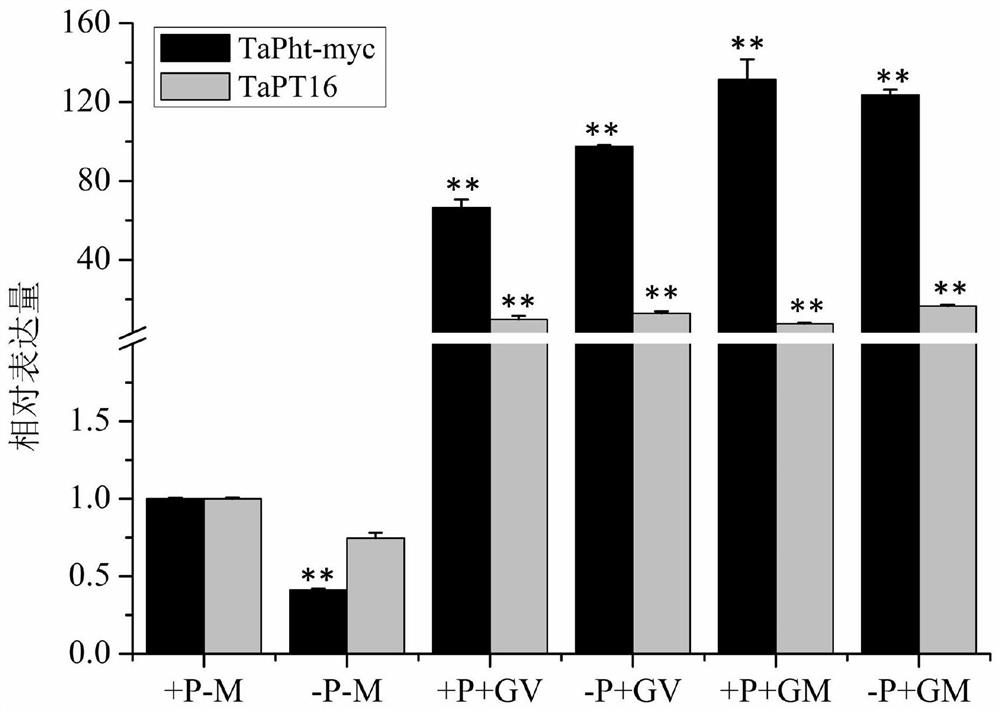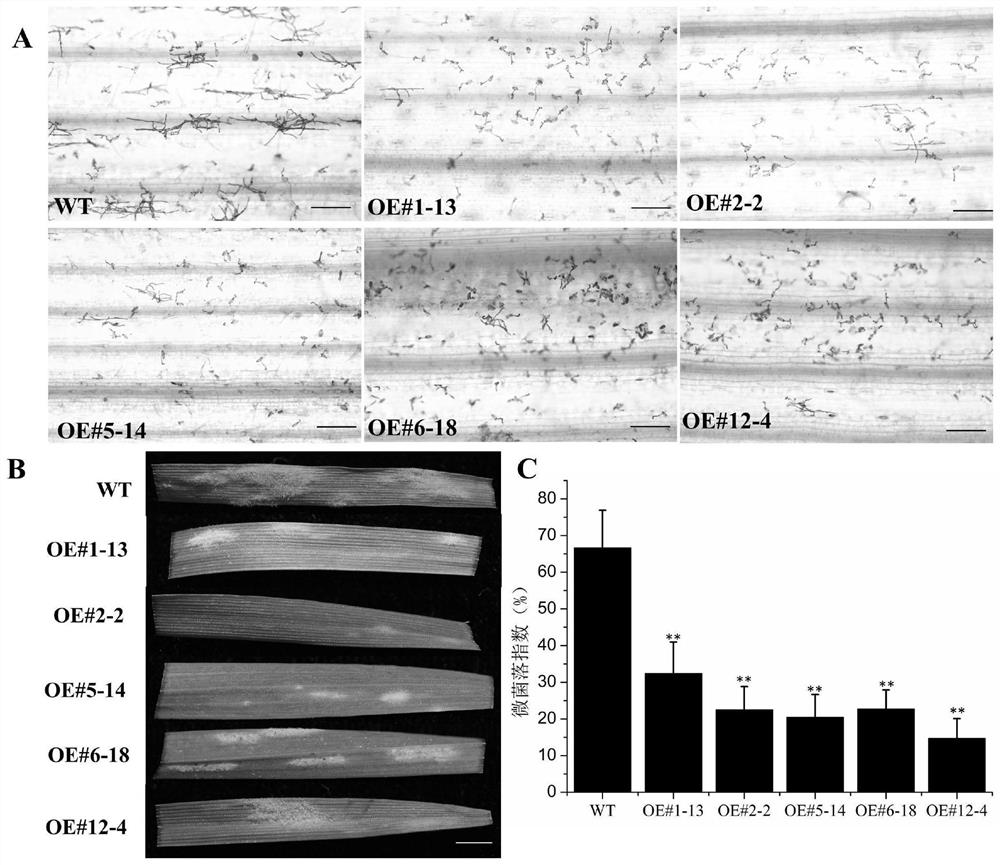Application of gene TaPT16 in improving resistance of plants to powdery mildew
A technology of powdery mildew, gene, applied in the field of agricultural biology
- Summary
- Abstract
- Description
- Claims
- Application Information
AI Technical Summary
Problems solved by technology
Method used
Image
Examples
Embodiment 1
[0024] Mycorrhizal and low phosphorus treatment
[0025] The wheat at the three-leaf stage was transplanted into the medium of fine sand, vermiculite and perlite mixed with two kinds of mycorrhizae of Glomus mosesi and Glomus terrestriale respectively, and the inoculation amount of mycorrhizae was 200 spores / 15g. Grown in a light incubator with a photoperiod of 16h / 8h and a temperature of 18°C / 15°C, all inoculated and control plants were watered twice a week with 1 / 2 Hoagland nutrient solution, 5 μM KH 2 PO 4 Low phosphorus treatment, 500μM KH 2 PO 4 For high phosphorus treatment, after 6 weeks, the wheat roots were taken, washed with water, and the root samples were harvested, frozen in liquid nitrogen and stored at -80°C for later use.
[0026] Total RNA was extracted from the mycorrhizae and the samples treated with low phosphorus and high phosphorus using TRIzol Reagent (invitrogen).
[0027] Using 1 μg of total RNA as a template, the first-strand cDNA was synthesized...
Embodiment 2
[0030] Example 2 Analysis of resistance to wheat powdery mildew by overexpressing TaPT16 in wheat
[0031] In order to further analyze the function of TaPT16, the full-length 1671bp of TaPT16 was cloned and constructed into the plant vector IPK003 promoted by the maize ubiquitin promoter to obtain the overexpression recombinant vector IPK003-TaPT16, and the recombinant vector and empty vector were transformed into Agrobacterium by heat shock method GV3101 was transformed into Zhoumai 26 through the Agrobacterium-mediated transformation method, and 5 single-copy homozygous transgenic lines were obtained after screening, and they were inoculated simultaneously on the leaves of wild type Zhoumai 26 and 5 transgenic plants at the three-leaf stage Fresh powdery mildew spores of wheat were placed on a 1% agar plate added with 85 μM benzimidazole, and the plate was placed in a climate incubator at 20°C to incubate for 4 hours. / cm 2 ) Gently shake the fresh conidia of powdery mildew...
Embodiment 3
[0037] Example 3 Analysis of the Resistance of Overexpressing TaPT16 in Wheat to Wheat Stem Rot
[0038] In order to further analyze the function of TaPT16 in the interaction between wheat and other pathogenic bacteria, the pathogenicity of wheat stalk rot was analyzed in 5 single-copy homozygous transgenic plants of TaPT16. Firstly, inoculate the dominant pathogen of wheat stalk rot - Fusarium graminearum block on the potato glucose medium which is stored in -80°C refrigerator, and cultivate it in the incubator at 25°C for 3-5 days, and select the pseudomonas with better growth. 4-6 pieces of Fusarium graminearum in 100mL CMC sporulation medium (carboxymethyl cellulose 15g / L, ammonium nitrate 1g / L, potassium dihydrogen phosphate 1g / L, magnesium sulfate heptahydrate 0.5g / L , yeast extract 1g / L, autoclaved at 121°C for 20min), cultured on a shaker at 25°C at 180rpm for 5-6 days; filtered with three layers of gauze in an ultra-clean bench to remove the bacteria cake, poured into...
PUM
 Login to View More
Login to View More Abstract
Description
Claims
Application Information
 Login to View More
Login to View More - R&D
- Intellectual Property
- Life Sciences
- Materials
- Tech Scout
- Unparalleled Data Quality
- Higher Quality Content
- 60% Fewer Hallucinations
Browse by: Latest US Patents, China's latest patents, Technical Efficacy Thesaurus, Application Domain, Technology Topic, Popular Technical Reports.
© 2025 PatSnap. All rights reserved.Legal|Privacy policy|Modern Slavery Act Transparency Statement|Sitemap|About US| Contact US: help@patsnap.com



